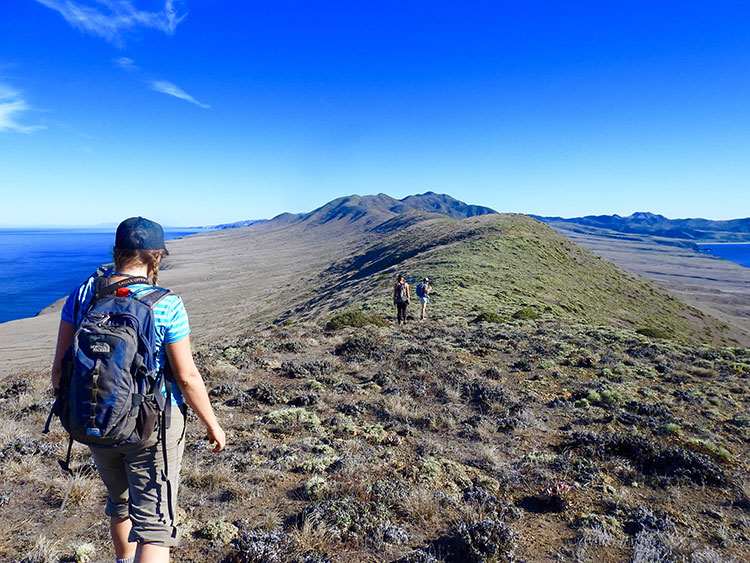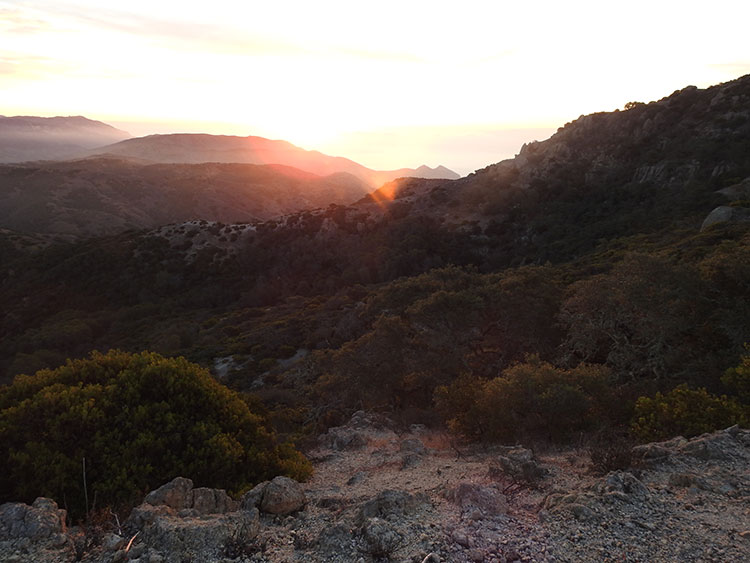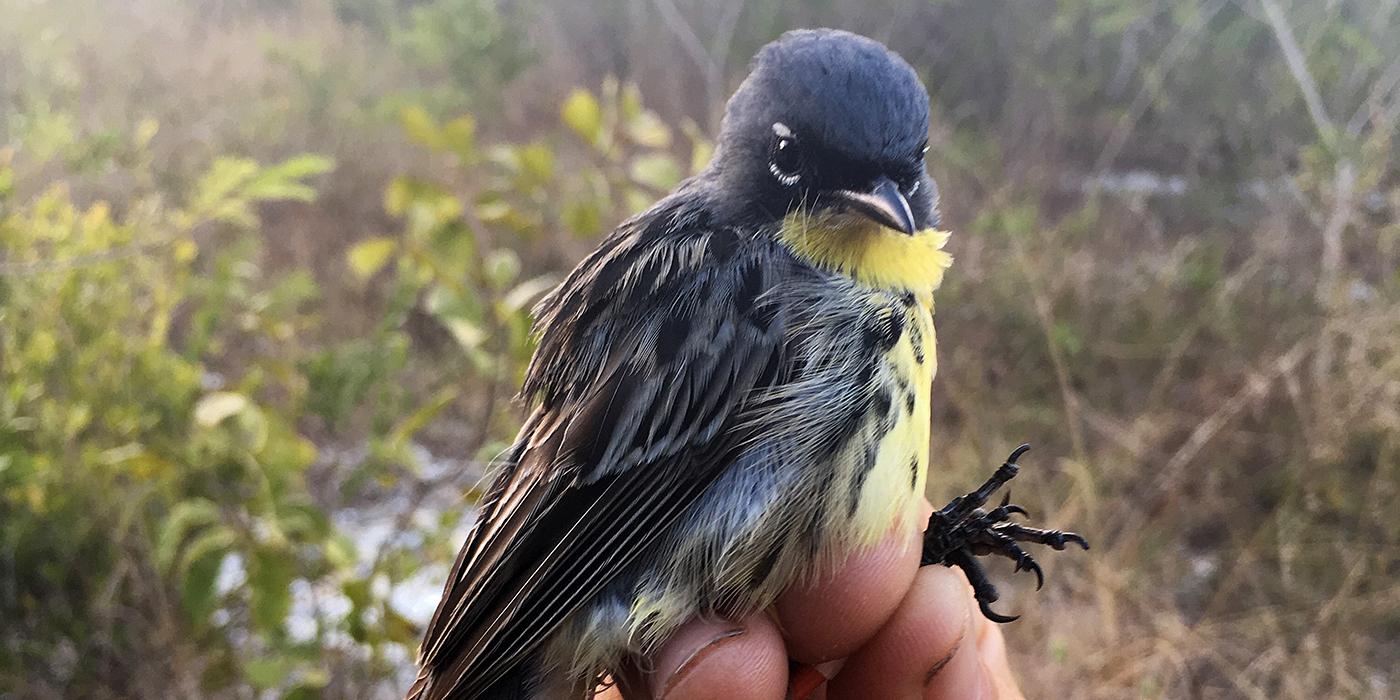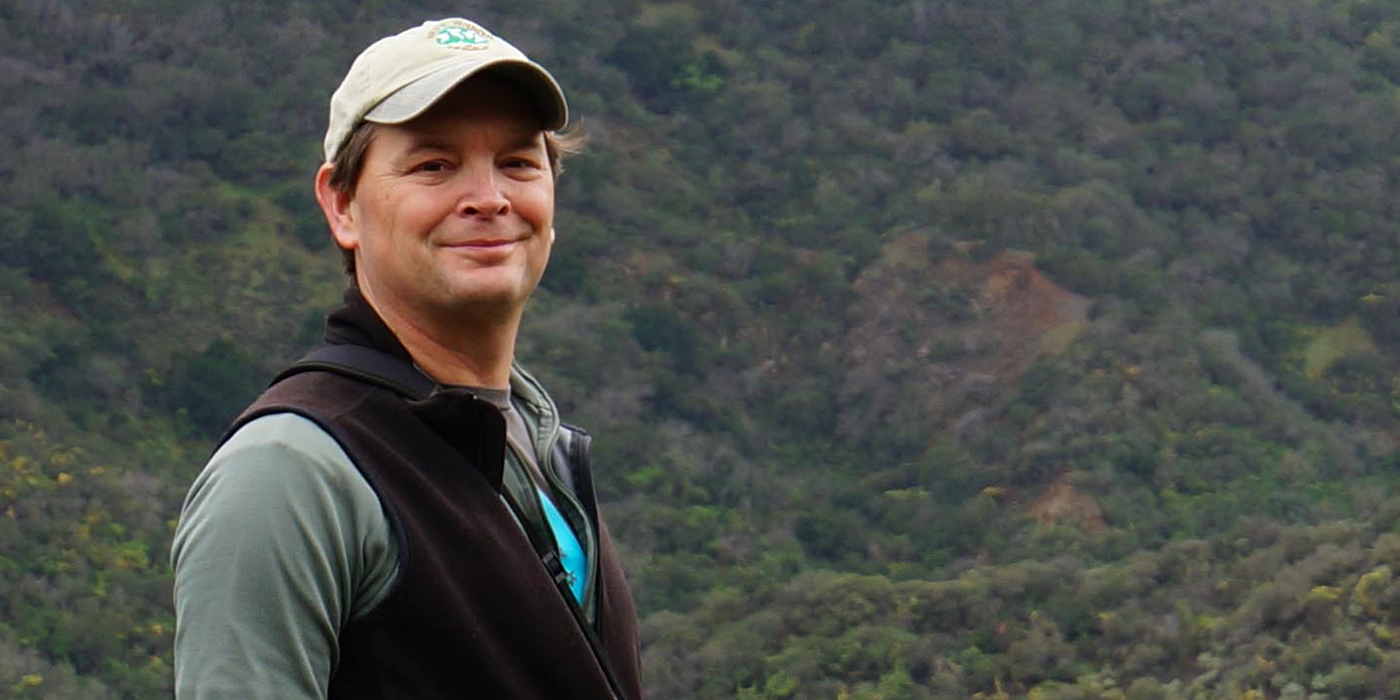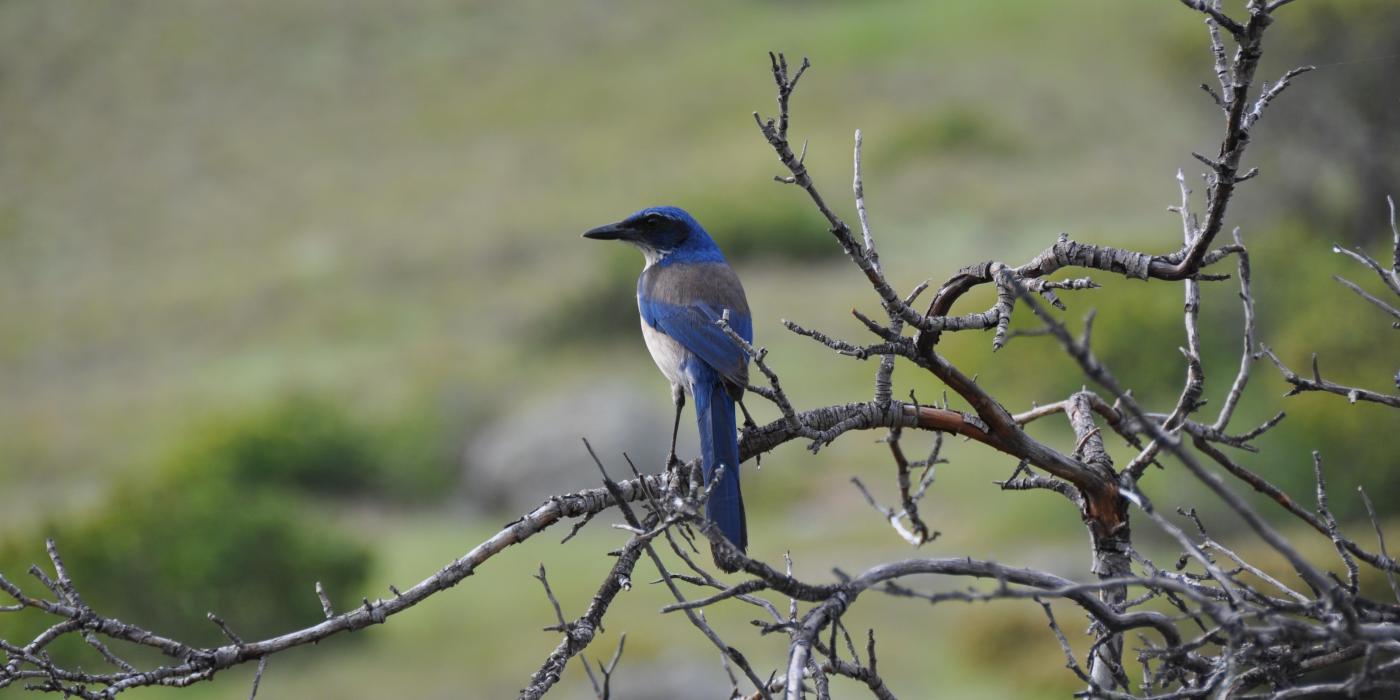Island Scrub-Jay Expedition Blog
The fall season on Santa Cruz Island, off the coast of Southern California, is coming to a close. This marks 9 years of SMBC studying the endemic Island Scrub-Jay, in partnership with The Nature Conservancy and Channel Islands National Park. It may have been a short season, but it was action packed, with resighting color-banded birds throughout our four study plots, quantifying dispersal of yearling jays, evaluating island-wide acorn productivity, and taking behavioral observations on territorial pairs.
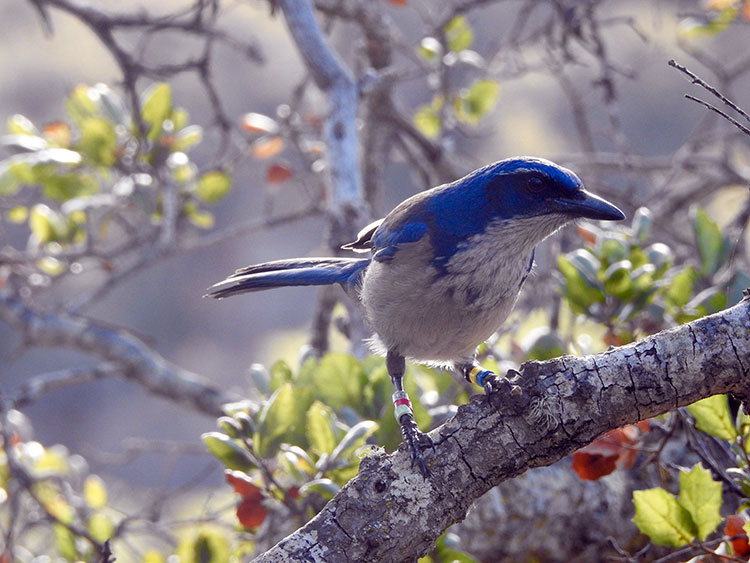
Fall season on the island is full of acorn counts. In collaboration with Dr. Mario Pesendorfer, a postdoc at Cornell University and a former PhD student at the SMBC, the crew spends time evaluating acorn production on the study plots, as well as across the whole island. This allows for understanding of how acorn availability and quality may affect Scrub-Jay survival and reproduction, as acorns are one of their main food sources. Jays are scatter-hoarders, and the acorns they collect are hidden throughout their home ranges for later. But, the jays recover less than half of the acorns cached, making them important seed dispersers for island oak trees.
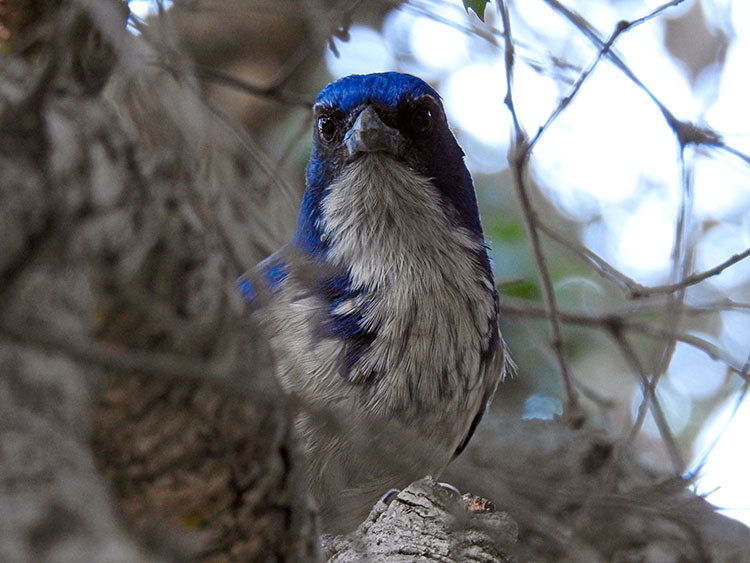
Although acorns are a key food source for jays during winter, they are rather opportunistic. In fact, they eat just about anything, including insects, berries, snakes, lizards, mice, and other birds' eggs and nestlings. To gain a better understanding of how much time and effort jays put into caching acorns, sallying in the air for flies, and defending their favorite stretch of canyon from juveniles, we collected behavioral observations on territorial pairs across the different study plots. Understanding the time allocated to different behaviors can help in understanding how changes in the environment, such as the severe California drought, affects the jays' day to day life and overall survival.
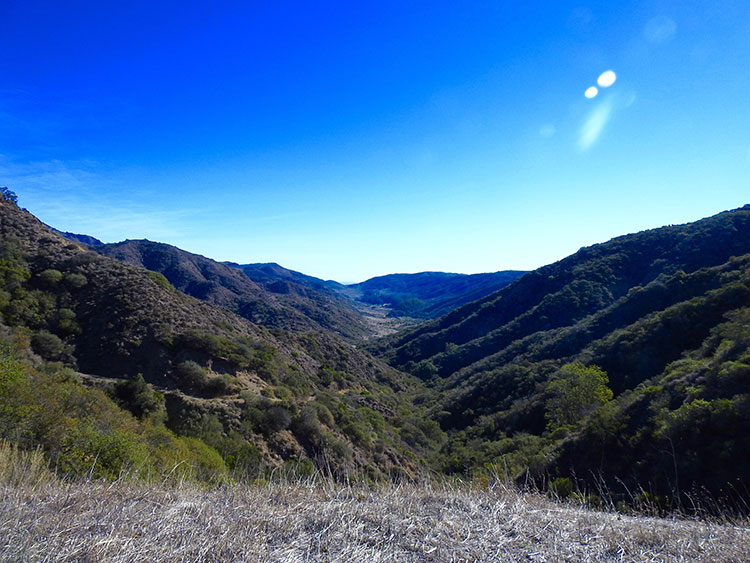
Time in between observing wiley Island Scrub-Jays through their territories is spent exploring the island's amazing diversity of habitats. The west end is open grassland and lichen covered rocks. The huge central valley and north slope is full of steep, moist canyons shaded by old, twisting oak trees and ironwoods. The coast alternates between steep dramatic cliffs and picturesque sandy beaches. Santa Cruz Island feels full of life, even during the dry fall months before the winter rains. There's nothing quite like driving an old land cruiser to the top of a mountain ridge to watch the sunset, knowing you and your crew members are the only people around on a southern California island.
